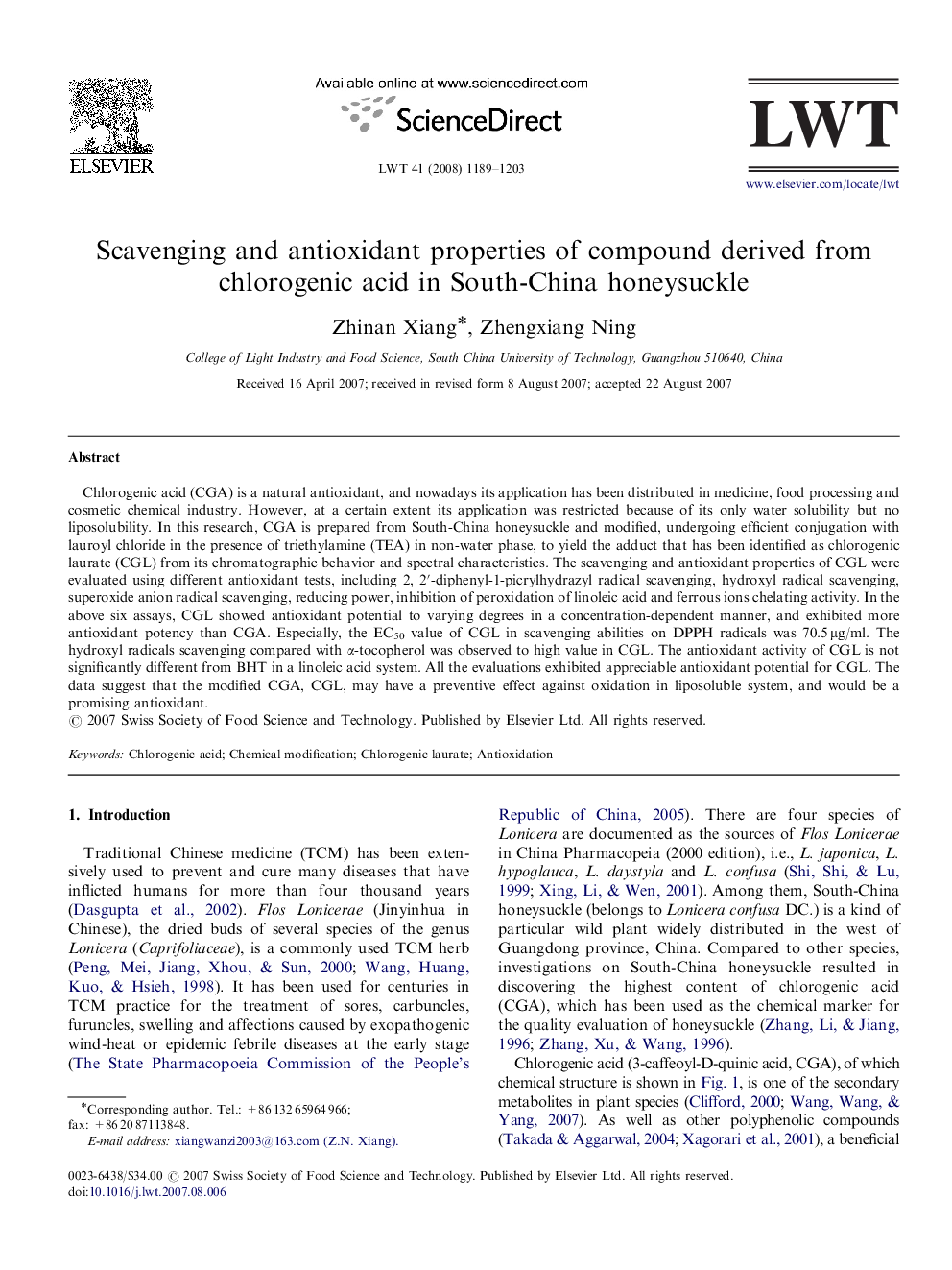| Article ID | Journal | Published Year | Pages | File Type |
|---|---|---|---|---|
| 4565175 | LWT - Food Science and Technology | 2008 | 15 Pages |
Chlorogenic acid (CGA) is a natural antioxidant, and nowadays its application has been distributed in medicine, food processing and cosmetic chemical industry. However, at a certain extent its application was restricted because of its only water solubility but no liposolubility. In this research, CGA is prepared from South-China honeysuckle and modified, undergoing efficient conjugation with lauroyl chloride in the presence of triethylamine (TEA) in non-water phase, to yield the adduct that has been identified as chlorogenic laurate (CGL) from its chromatographic behavior and spectral characteristics. The scavenging and antioxidant properties of CGL were evaluated using different antioxidant tests, including 2, 2′-diphenyl-1-picrylhydrazyl radical scavenging, hydroxyl radical scavenging, superoxide anion radical scavenging, reducing power, inhibition of peroxidation of linoleic acid and ferrous ions chelating activity. In the above six assays, CGL showed antioxidant potential to varying degrees in a concentration-dependent manner, and exhibited more antioxidant potency than CGA. Especially, the EC50 value of CGL in scavenging abilities on DPPH radicals was 70.5 μg/ml. The hydroxyl radicals scavenging compared with α-tocopherol was observed to high value in CGL. The antioxidant activity of CGL is not significantly different from BHT in a linoleic acid system. All the evaluations exhibited appreciable antioxidant potential for CGL. The data suggest that the modified CGA, CGL, may have a preventive effect against oxidation in liposoluble system, and would be a promising antioxidant.
